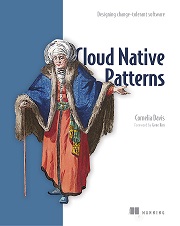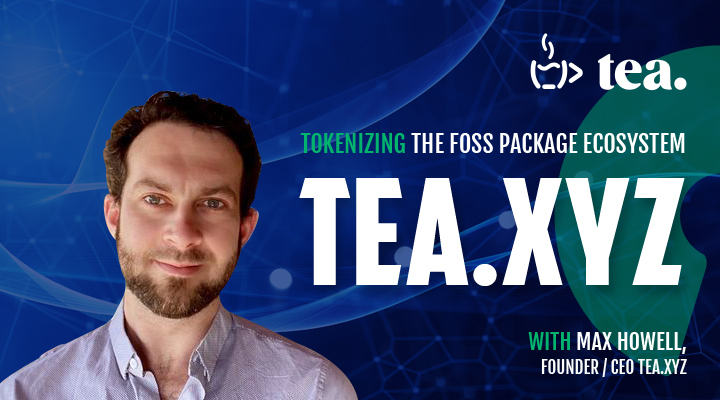Episode 51: Cloud Native Agility, Reliability and Stability with Weaveworks CTO Cornelia Davis
Description
Intro
Mike Schwartz: Hello and welcome to Open Source Underdogs. I’m your host Mike Schwartz, and this is episode 51, with Cornelia Davis, Chief Technology Officer of Weaveworks and author of the Manning book Cloud Native Patterns.
 </figure>
</figure>If you’re like me and your whole business has
been realigned around distributed cloud computing, Cornelia’s book can help you
make sense of it.
Prior to joining Weaveworks, Cornelia was an engineering leader at Pivotal, where she was active developing the Cloud Foundry platform. If you want to learn more about Pivotal, you might remember James Watters was a guest on Episode 40 of Underdogs.
If you’re a fan of the podcast, help us get the word out. The goal is to help startups figure out how to use open-source software as part of their business model. But we can only do that if they know about us. So, take a minute, if you can, to comment on Hacker News, tweet out a link to an episode, or follow me and share one of my posts on LinkedIn.
Cornelia just had so many interesting things to say–I’m sure you’ll be super impressed. So, without further ado, let’s get on with the show.
Origin
Mike Schwartz: Cornelia, thank you so much for joining us today.
Mike Schwartz: At a high level, can you talk about how Weaveworks got started,
and what’s the mission of the company?
Cornelia Davis: Mike, it’s great to be here. Thank you so much for having me.
Cornelia Davis: I’ll go all the way back to the founding of Weaveworks, which has
been already about five years ago, and the initial thing that Weaveworks went
off and did, was they created a networking product, and it was around container
networking. We still have that product, or I should say project, because it’s
an open-source project, it’s called Weave Net.
And this was pre-Kubernetes, so, it was
post-Docker. So, people were moving towards container-based solutions, but then
this challenge of how do you do networking across these various containers that
are running on various hosts, and how do you do what we now refer to as overlay
networks across Kubernetes. These are problems, and it’s a new set of
abstractions. It used to be everything was abstracted around the hosts, now, how
you do networking across this new abstraction of containers. And that was the genesis,
the company.
And if we think about who the founders of the
company were, Alexis Richardson and Matthias Radestock, and they had worked
together before, they were the cofounders of Rabbit, RabbitMQ, which had been
acquired by VMware. And then, VMware had done the Pivotal spin out, and both of
them went over to Pivotal, so they both were working on Cloud Foundry at the
time.
Now, Cloud Foundry has been container-based from
the beginning, and so we needed to solve those problems around networking
across containers and how do you do that, and that was kind of the genesis of
them going off in creating Weaveworks. And it had a different name, I wasn’t
with him at the time, but that was the genesis of Weaveworks.
Now, I’m going to fast-forward a lot to tell you a little bit more about who we are today, because we are not a networking company. We did some things with Weave Net, and Kubernetes came along, and we started kind of branching out into more than just networking for containers, but we’ve got this — there’s other problems that need to be solved around containers. And then, Kubernetes came along, and how do you manage that platform. And so, we started moving into the space of a set of services that assist kind of in this container-based platform space.
And our first product was a product that we call Weave Cloud, which is a SaaS product that allows a customer to effectively sign up for that service, which drops an agent on their Kubernetes cluster, and then it gives them services like observability, and uses things like Prometheus and Grafana to provide those services to organizations.
So, that was kind of Step 2. And then, we were
of course running this SaaS product, which was running itself on Kubernetes.
So, we had developed a whole bunch of skills, if you will, SRE or CRE skills,
around managing this Kubernetes platform in this application on top of Kubernetes.
And you can find Alexis telling the story, we had a production outage, and our
meantime recovery was crazy fast because of some of the things that we had put
in place. And that was the birth of GitOps.
It was this new set of operational practices that we were employing to run our own platform,
that allowed us to have a very short meantime to recovery when we had an outage on Weave Cloud. And that was when we had the light bulb moment that takes us to where we are today, which is, oh my gosh there’s a set of tools that support modern cloud-native operational practices, the term we use for that is GitOps, and that’s where the company is focused now.
Why Join Weaveworks?
Mike Schwartz: Cornelia, you worked with James Watters, who
is actually a guest on episode 40th of Underdogs. And obviously,
Pivotal is a great company. What was it about Weaveworks that made you want to
join their team?
Cornelia Davis: There was a great story there as well. I consider James — just working with him in the last seven years, or so, at Pivotal, and I went to work FOR James — in fact, the way that I went to work for James was that I had started, I was in the EMC/CTO office, and I was playing with Cloud Foundry, because I worked on emerging tech. And so, that was an emerging tech space that I was working with, and so, I had started learning about Cloud Foundry, and I had started blogging about it. I’d started blogging about Bosch, which is one of the components under the covers.
And then, I met a few people on the Cloud Foundry team, and I started becoming interested in Pivotal. EMC was spinning Pivotal off EMC and VMware, and I started becoming interested in joining that team in particular, as a part of the spinoff. And they introduced this person that I had met, Elizabeth Hendrix introduced me to James Watters, and I walked into his office, and he said, “Wait a minute. Are you the woman who’s been blogging about Bosch?” And I said, “That’s – guilty!” And so, that was how we met, and we’ve been working together for some time. And it has been just a complete delight, and he’s a good friend as well.
But how I ended up at Weave, it’s definitely connected. So, James and I, James was at VMware before I wasn’t. I started working on Cloud Foundry shortly before the spin-off, but we were both there in the early days of Cloud Foundry. Cloud Foundry was this platform, this application CloudNative application platform that was highly opinionated. And those strong opinions brought to Enterprise customers, and if you found an Enterprise customer, who was willing to absorb those strong opinions, their outcomes were PHE-NO-ME-NAL, absolutely phenomenal.
Now, for some Enterprises, those opinions were
too strong. And Cloud Foundry by design was a platform that was designed with
these strong — you know, I used to say we’re unapologetically opinionated in
our platform. And, again, that really yielded fantastic outcomes.
And then, what happened is that Kubernetes came
along. And Kubernetes was a tool kit, if you will, I considered Kubernetes a toolkit
for building platforms. And famous people like Kelsey Hightower said it’s a platform
for building platforms. And it really is. It is a toolkit for building
platforms. And while I was still at Pivotal, we kind of toyed with this idea of,
well, what people really want is an opinionated Kubernetes platform. And while
I’m not sure that everybody at VMware and Pivotal would agree with this, my two
and a half years of working on Kubernetes at Pivotal, I started forming this
opinion that an opinionated Kubernetes isn’t what customers wanted, they wanted
their own flavor of Kubernetes.
And that is what has brought me to Weaveworks. It is because what we do is, we are really embracing – we’re building out a certain set of tools that will help the platform teams build out the platforms that their developers need, instilling the opinions that their developers need or that their company – sometimes those opinions are not developer opinions, they are compliance and regulatory and security opinions. But it’s more of let the platform teams at these various Enterprises build THEIR platform. And I see that the way that Weaveworks is embracing that and providing that capability to enterprises through declarative configuration, multiple reconciliation loops – we will talk a little bit more about those things – that was what excited me about it. And that’s why I’m at Weaveworks now.
Value Prop
Mike Schwartz: From a marketing
perspective, I don’t envy the marketing team who has to consolidate this group
of products and services into one understandable business proposition. What do
you think are the most important value propositions for Weawork customers?
Cornelia Davis: One of my favorite bits of work, and this isn’t my work but it
i






